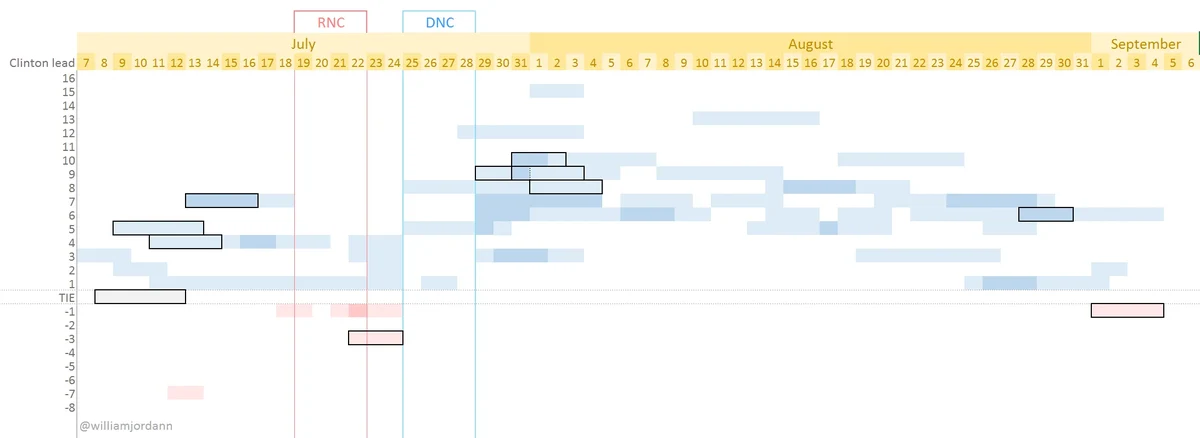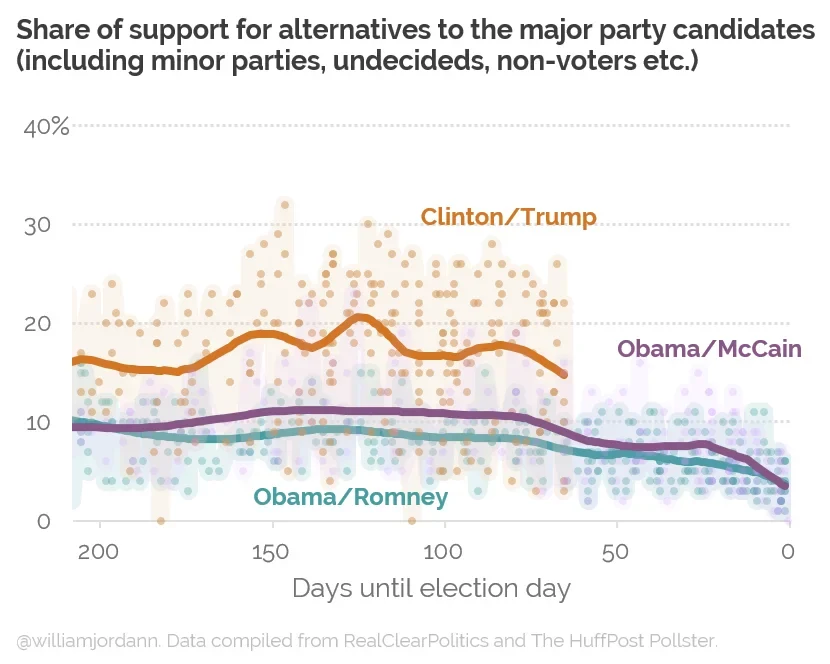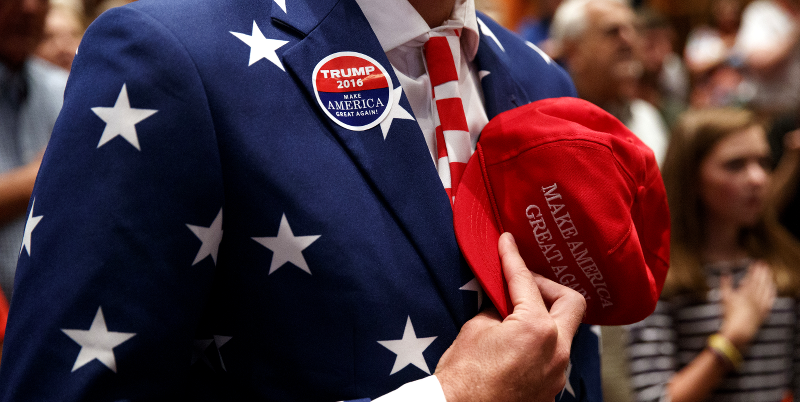Hello, I'm Will Jordan and welcome to the Pulse.
As Trump leads in a poll, it's important to look at the averages (and to remember they're not perfect either)
Is Hillary Clinton blowing her lead?
Not yet, but her convention “bump” may have turned out to be more of a “bounce” after all. Donald Trump has clearly recovered a bit, going from a high single-digit deficit to a low single-digit deficit (a trend confirmed by this week’s YouGov/Economist Poll). But it’s important to keep an eye on the big picture – polls like the latest CNN/ORC poll with surprising results (Trump leads by two among likely voters – his first lead in any major media poll since July) will get outsized coverage simply because the results are surprising, and also because a major media organization with a big megaphone paid for the poll. Polling averages show the race narrowing, but all show Clinton leading by 2-5 points. That said, poll averages have disadvantages of their own.
What’s wrong with poll averages?
Don’t get me wrong: if you want to look at one number, the average is probably better than just the latest splashy poll. However, by their nature, averages leave out certain information – including the spread of the results (highs and lows) as well as the exact timing of the interviews for the polls included in the average. This information can be important when judging how reliable a measure the average is for where things are now. To keep an eye on some of these factors, I started tracking the polls using the below visualization, which shows Clinton’s lead in recent 2-way polls according to the period when interviews for the poll were conducted.

Notice only a few polls conducted interviews over the past week (part of this is probably because polling over Labor Day, when many people are away from home, is especially difficult) and there’s not yet a clear grouping of polls around a certain level. What this helps to show is that “wait and see” is sometimes as important as “look at the averages” when reading polls. This is especially true now, because there is usually a wave of high-quality polling starting after Labour Day and ending on Election Day.
Are the polls “predictive” yet?
You may have heard (here, for example) that you should probably “wait until Labour Day” to start paying close attention to the polls. Well, Labour Day has come and gone – what does that mean? Essentially, there will be more polls in the final stretch of the campaign and later polls tend to be closer to the actual outcome. David Byler of RealClearPolitics analyzed historical polling data to show in more detail what this means for Trump (and Clinton) in the final stages of the race. Byler writes: “Trump can still win, to do so he needs to be within a few points in late September, and there isn't much time to move polls in October”.
Is history a good guide this year?
I’ve made this point before, but it’s worth revisiting. Any historical analysis of election polling is based on the dozen or so elections since modern polling began. This is a small sample size, there have been oddball elections, and 2016 may be one of them. Below I have charted the share of voters choosing alternatives to the the main party candidates in 2008, 2012 and 2016 – this includes undecided voters as well as third party voters and non-voters.

Clearly, 2016 is different. Will these undecided/third party voters “come home” to the major party candidates? Maybe, maybe not. But this wasn’t a question that mattered as much in 2008 or 2012 when they made up only 5-10% of respondents. In 2016 potential for this group to swing disproportionately to Clinton or Trump introduces an uncommonly high degree of uncertainty about the polls.
So, what’s behind the tightening in the race?
As these few charts from pollster Charles Franklin demonstrate, Clinton has slipped among Democratic-leaning voters, while Trump has recovered among Republicans. YouGov’s own polling shows that many Democratic-leaning Sanders supporters remain skeptical of Clinton, and the “pay-for-play” stories regarding the Clinton Foundation play into preexisting concerns about corruption and integrity. The stories could have the same effect on anti-Trump Republicans. There is little evidence that Trump’s own overtures on race and immigration are helping him: in the latest YouGov/Economist poll, 54% say Trump is “racist”, nominally more than the 51% who said the same thing the week before. Clinton has spent the month trying to make the campaign about the threat posed by Trump; to get back to her post-convention highs, she may need to remind voters why she is a good alternative.
The Pulse is a weekly newsletter YouGov has launched ahead of the 2016 primaries and general election to give readers a one-stop-shop for the latest polling-related news from the campaign. In addition to YouGov’s own extensive coverage of the election, The Pulse gives you the five things you need to know about the state of the campaign each week.










